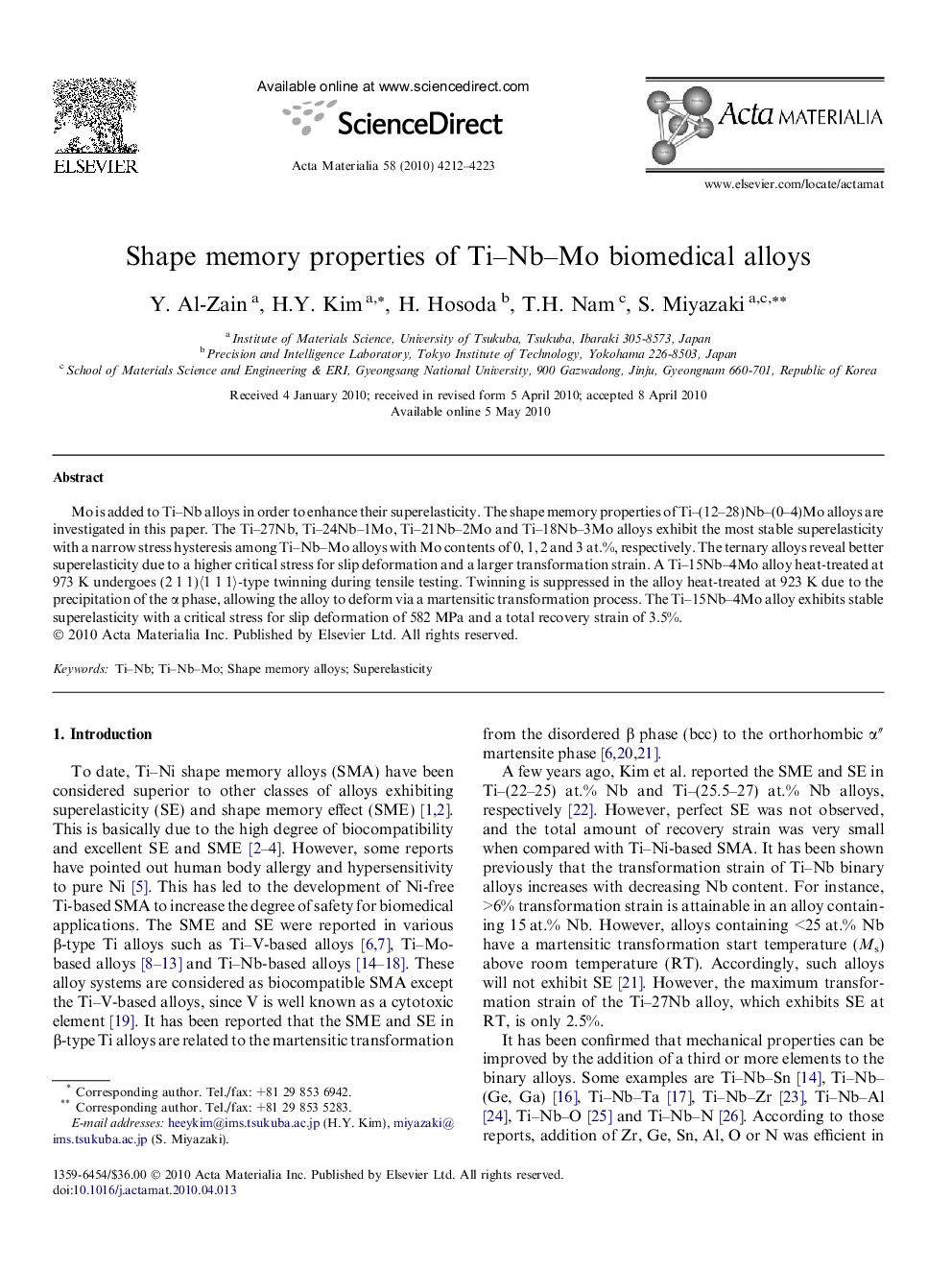| Article ID | Journal | Published Year | Pages | File Type |
|---|---|---|---|---|
| 1447507 | Acta Materialia | 2010 | 12 Pages |
Mo is added to Ti–Nb alloys in order to enhance their superelasticity. The shape memory properties of Ti–(12–28)Nb–(0–4)Mo alloys are investigated in this paper. The Ti–27Nb, Ti–24Nb–1Mo, Ti–21Nb–2Mo and Ti–18Nb–3Mo alloys exhibit the most stable superelasticity with a narrow stress hysteresis among Ti–Nb–Mo alloys with Mo contents of 0, 1, 2 and 3 at.%, respectively. The ternary alloys reveal better superelasticity due to a higher critical stress for slip deformation and a larger transformation strain. A Ti–15Nb–4Mo alloy heat-treated at 973 K undergoes (2 1 1)〈1 1 1〉-type twinning during tensile testing. Twinning is suppressed in the alloy heat-treated at 923 K due to the precipitation of the α phase, allowing the alloy to deform via a martensitic transformation process. The Ti–15Nb–4Mo alloy exhibits stable superelasticity with a critical stress for slip deformation of 582 MPa and a total recovery strain of 3.5%.
